Syria Situation Report: April 1 - 14, 2020
Apr 16, 2020 - Michael Land, Nada Atieh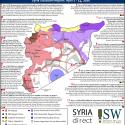
Syria Situation Report April 1 - 14, 2020

Syria Situation Report April 1 - 14, 2020
Putin’s response to the COVID-19 crisis is focused on shaping reality to conform to his desired narrative. The Kremlin is restricting the free flow of information on COVID-19, jailing doctors, and obfuscating its public infection numbers to support Putin’s central narrative that COVID-19 will affect Russia less than much of the world. The Kremlin is additionally testing new methods of societal control as part of its efforts to control the spread of COVID-19. The Kremlin will retain these improved authoritarian tools for use against future opposition.
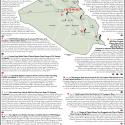
ISW is assessing the ongoing unrest and its effects on political-security dynamics in Iraq. The Iraq Situation Report (SITREP) map series summarizes key events and likely developments to come. The following SITREP map covers the period April 1 - 7, 2020.
The Kremlin is exploiting calls by the United Nations for limited sanctions waivers to combat COVID-19, to advance the Kremlin’s longstanding objective of removing international sanctions on Russia and its partners. The Kremlin has launched an information campaign on this issue and is leveraging its sanctioned allies around the world, alongside networks of Russia-amenable actors in Europe, to amplify the Kremlin’s message.

Iran advanced multiple lines of effort in Iraq to compel the U.S. withdrawal from the country. Iran successfully organized political opposition from the most powerful Iraqi Shi’a blocs to deny parliamentary backers to Prime Minister-designate Adnan al-Zurfi. Zurfi, who enjoyed tacit U.S. and international support, is now unlikely to win a vote of confidence. The U.S. completed pre-planned consolidations from three major Iraqi bases and several smaller camps, while several European nations either completely or partially withdrew their forces from Iraq over COVID-19 concerns.
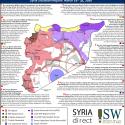
Syria Situation Report: March 18 - 31, 2020
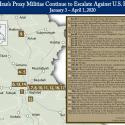
Iran continues to escalate proxy attacks against the U.S. in Iraq, demonstrating that it remains undeterred despite the January 3 strike that killed IRGC - Quds Force Commander Qassem Soleimani and key Iraqi proxy leader Abu Mehdi al-Muhandis and subsequent U.S. strikes. Iran’s proxy network in Iraq is advancing its campaign to compel an American withdrawal by increasing the operational tempo of its attacks on U.S. and allied personnel. Iran’s proxies are responsible for at least 15 attacks on American and U.S.-led Coalition personnel since January 3. A new militia group, Usbat al-Thairen, claimed several recent attacks, indicating that the proxy network may be reorganizing in observance of the shared vision of Soleimani and Muhandis and that Iran may have reached a new phase in its campaign to expel U.S. forces form Iraq.
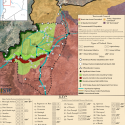
The Turkish Armed Forces (TSK) deployed roughly a division (over 20,000 soldiers) to Greater Idlib Province between February 1 and March 31, 2020. This map provides a partial assessment of which types of units Turkey deployed to each location based on publicly available information.

U.S. forces began one of three planned withdrawals from small bases in Iraq, two of which have been targets of frequent Iranian-proxy mortar attacks. The Pentagon described the withdrawal as a planned consolidation of forces.
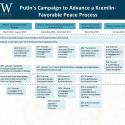
Russia in Review is a weekly intelligence summary (INTSUM) produced by the Institute for the Study of War (ISW). This ISW INTSUM series sheds light on key trends and developments related to the Russian government’s objectives and its efforts to secure them.